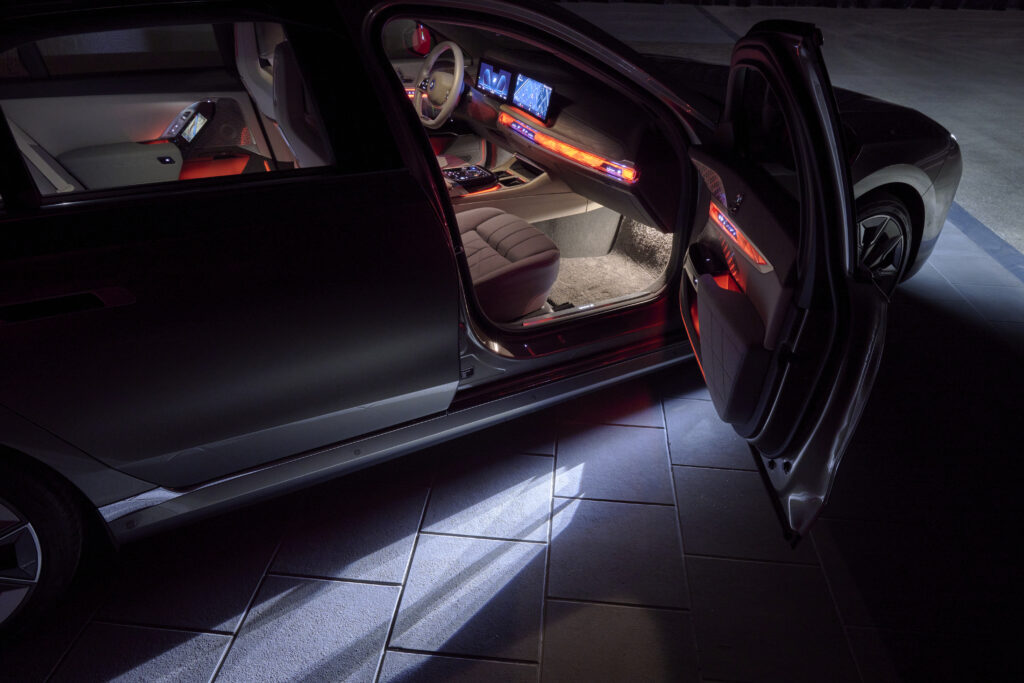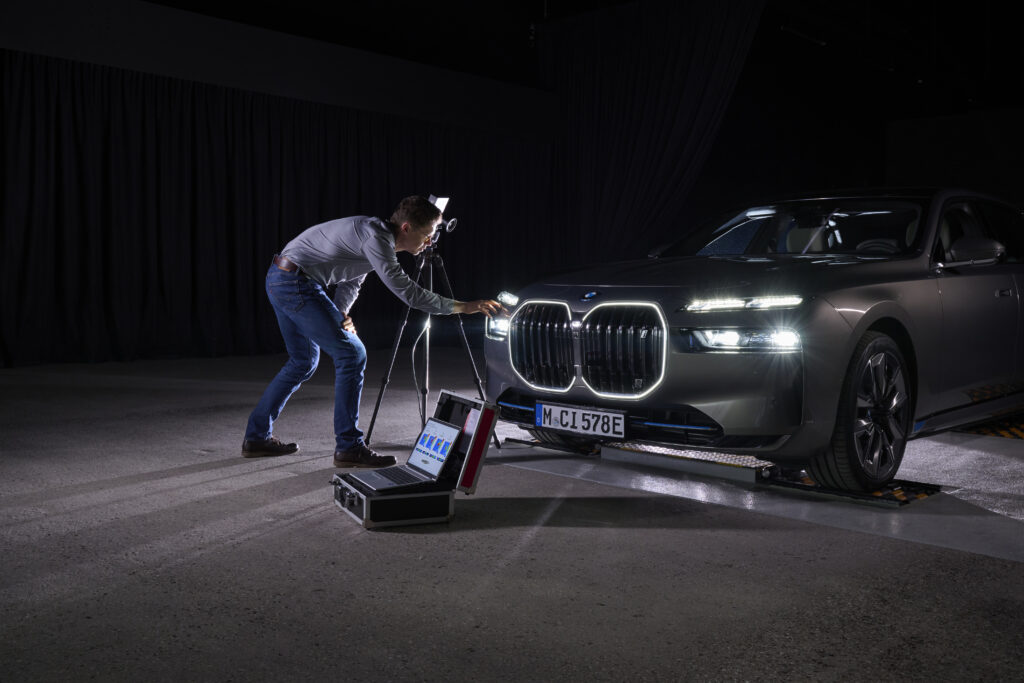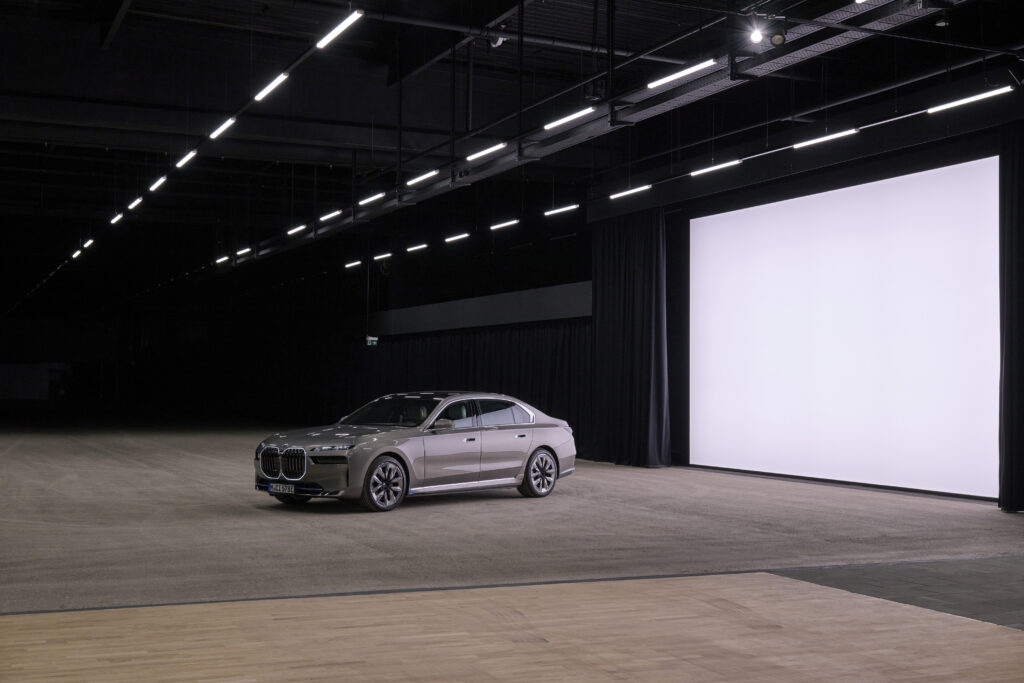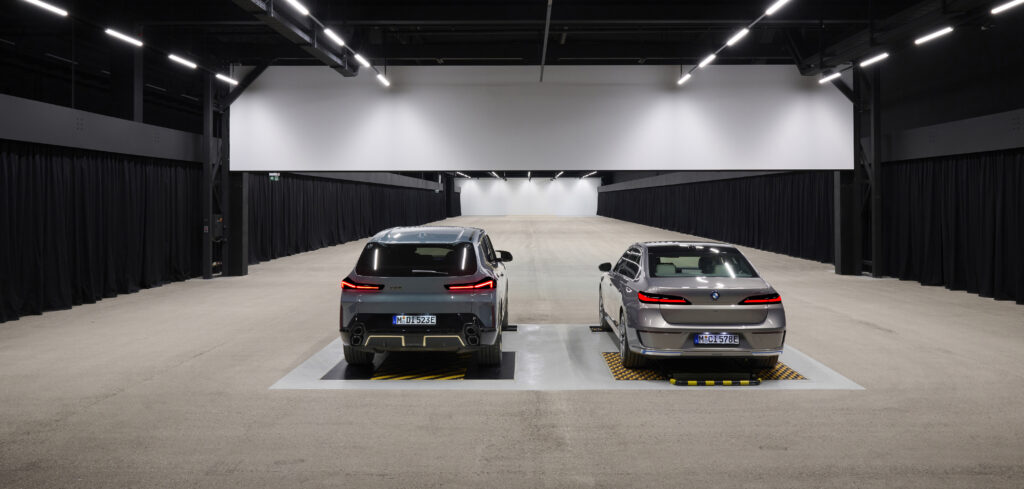Three years in the making, BMW Group has opened a cutting-edge lighting test facility, which will be a key instrument in the development of new light concepts
A brand-new light channel enables BMW engineers to test the headlights and exterior lighting of new vehicles in a controlled environment. Badged the Light Channel Next, the new facility is housed in a former parts warehouse in Unterschleißheim near Munich, with BMW stating that it is one of the biggest and most modern facilities of its kind in the world.
It facilitates analysis and optimization of all components of a car’s lights through precise simulation of different scenarios on real models. As well as different kinds of substrates, the ambient lighting conditions for any time of day and night can also be realistically reproduced. The Light Channel Next is currently being used to refine the integration of BMW’s adaptive headlights.
“For the BMW Group, light is a topic that is constantly gaining in importance. With the new Light Channel Next, we look forward to a future of bringing innovative ideas to the vehicle and the market which will make a lasting impression on customers and enhance road safety,” said lighting expert Christian Jebas.

Bright idea
When it comes to the development of new lighting systems, computer-aided simulations provide a solid basis. Yet despite huge advances in the field of virtual and mixed reality, evaluation of the lighting on the real vehicle remains indispensable.
At 132m-long (with a test surface of around 22m-wide), the Light Channel Next is the lengthiest development tool in the BMW Group. The facility offers an area of almost 3,000m2, and also includes a workshop for preparing prototypes.
Four different surfaces are available for analyzing new light technologies and designs. The central area has an asphalt surface, which has undergone a special surface grinding process to artificially age it. Its reflection characteristics correspond to those of a road, making it possible to evaluate the colour and homogeneity of static or variable low-beam headlight distributions.
In addition, a footpath or even a common underground parking lot floor coating can be used for testing the BMW light carpets.
 Lit up
Lit up
In order to avoid unwanted reflections from the walls or ceiling, the entire light channel is painted in a special light-absorbing matt black color. Light traps are mounted in the walls so that the room, with the exception of the floor, absorbs all light and other surfaces are deliberately designed to provide a clear visible reflection of incident light. The new light channel thus has a test wall measuring 18m-wide and 3m-high with a Lambertian radiation characteristic. This can be lowered if necessary and is used for measuring the color fringes at the light/dark boundary of low-beam headlight distributions or for precise adjustment of the headlight tilt. The light channel’s equipment also includes a light sail measuring around 80m2 for determining any unwanted stray light.
For evaluating signal lamps, which are active during the day, for example turn indicators or daytime driving lights, a daylight wall measuring 10m-wide and 5m-high provides a large, light background. This can be varied not only in terms of luminosity but also color temperature. In this way, the light conditions at midday can be simulated just as well as those in the evening hours. In order to ensure reproducible positioning of the test vehicles, the models are aligned fully automatically along the longitudinal axis by means of a centring stand. This not only increases the precision, but also saves valuable time that would otherwise be wasted on intricate maneuvering.
The numerous features and diverse application possibilities of BMW’s Light Channel Next will ensure the quality expectations of customers can be met and greatly simplify the daily work of engineers. The partial transformation of an existing warehouse meant costs were kept to a minimum.



